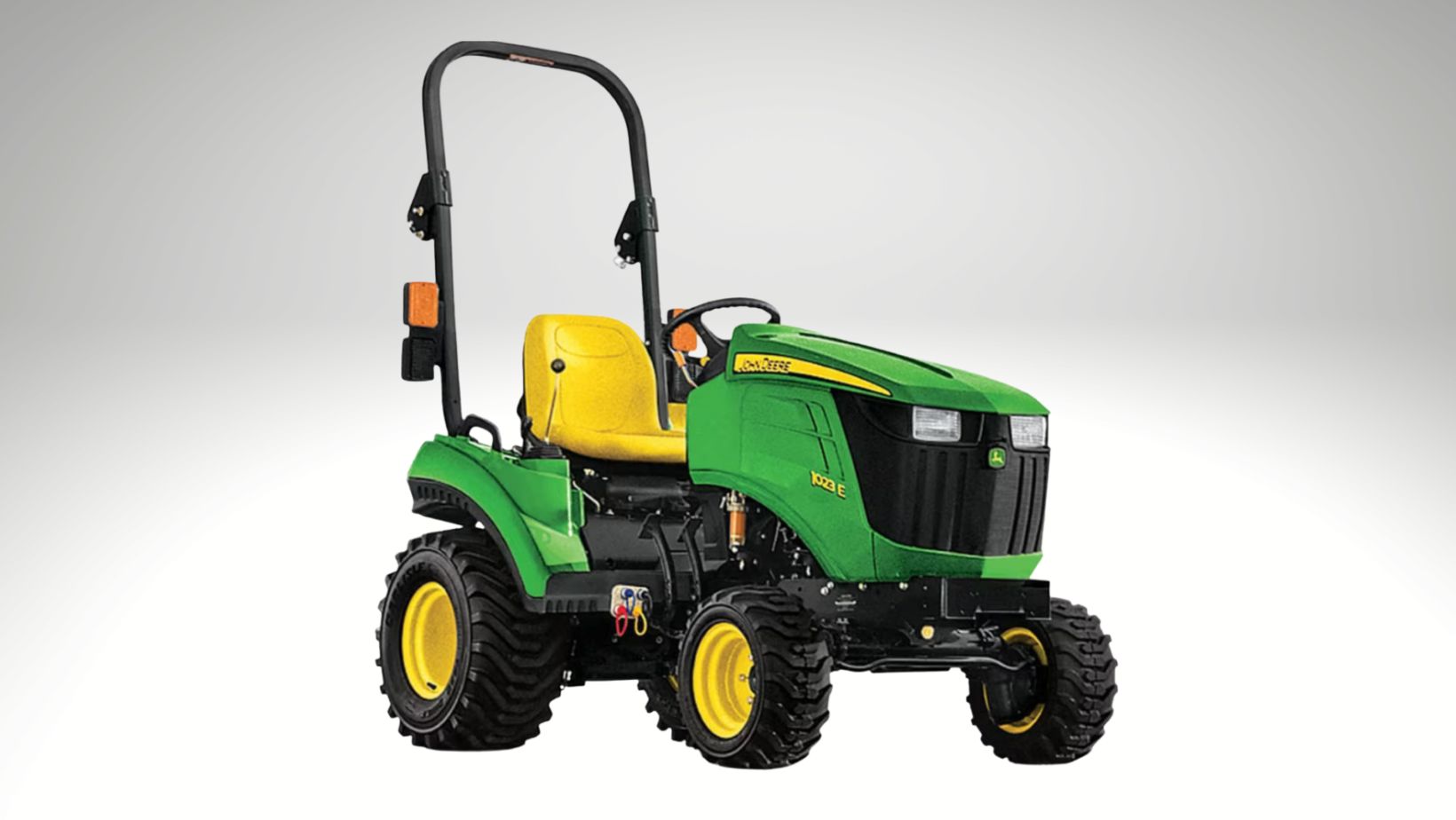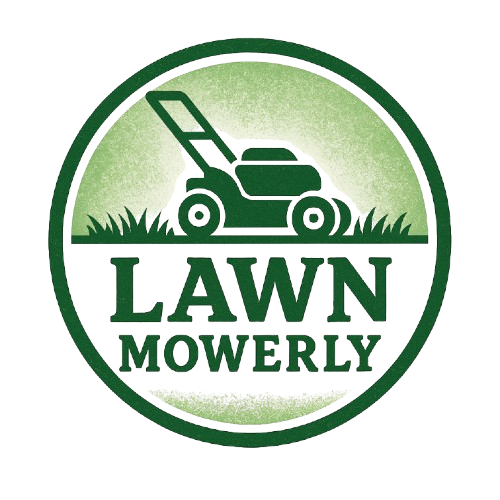
The John Deere 1023E sub-compact utility tractor is a popular machine for farmers and other agricultural workers.
But like any other tractor, it’s not without its problems.
Some of the most common John Deere 1023E problems include transmission issues, low RPM problems, PTO problems, etc.
So, in this blog post, we will discuss common John Deere 1023E problems and their solutions.
Let’s get started!
Common John Deere 1023E Problems

1. Hard to Start
This is one of the most common problems in John Deere 1023E tractors.
Reasons
There are several reasons why the John Deere 1023E is hard to start.
One reason is that the fuel filter element can clog, which would prevent air from getting into the fuel system.
Another reason is that there could be air in the fuel system, which would need to be bled out.
A third reason is that the injection nozzle could be defective or clogged, which would need to be inspected and replaced if necessary.
And finally, a fourth reason is that the fuel injection pump could be damaged, in which case a new pump or pump rebuild would be necessary.
How to Fix
The John Deere 1023E hard starting problem can be caused by a clogged fuel filter element. To fix this, you will need to replace the filter element.
Another possible cause of the hard starting problem is air in the fuel system. To fix this, you will need to bleed the fuel system.
If the John Deere 1023E is not starting due to a defective or clogged injection nozzle, you will need to inspect the nozzles and replace them if necessary.
If the John Deere 1023E is not starting due to fuel injection pump damage, you will need to install a new pump or rebuild it.
2. Engine Starts but Suddenly Shut Off
This is also a common problem in John Deere 1023E tractors. In this problem, the tractor will immediately shut off after starting.
Reasons
There are several potential reasons why John Deere 1023E would turn off immediately after starting.
One possibility is that the fuel filter is plugging, in which case the fuel injection pump failure would be the next most likely culprit.
Another possibility is that the air filter is clogged, in which case cleaning or replacing the element should take care of the issue.
Finally, it’s also possible that there’s an issue with the ignition system or some other component of the starting process.
How to Fix
If your John Deere tractor is shutting off immediately after starting, there are a few things you can do to try and fix the problem.
First, make sure that the fuel filter is clean and that there is no debris blocking the fuel injection pump.
If the air filter is clogged, clean or replace the element.
If these things do not fix the problem, you may need to rebuild or replace the fuel injection pump.
3. Low RPM Problem
Some people revealed in their review that their tractor RPM is very low even when they move the throttle to the high end.
Reasons
There are a few reasons that could cause low RPM in John Deere 1023E.
One reason is the presence of debris in the blades which can block the airflow and reduce the speed.
Another reason is that the oil level might be too low, resulting in insufficient lubrication.
Low fuel supply or clogged fuel filters can also lead to a decrease in engine speed.
How to Fix
To fix this problem you should try to figure out what part is actually responsible for the problem.
If debris is present in the blades then remove them and clean the blades.
Also, make sure there’s enough oil in the engine. If you find the fuel filter is clogged then clean and repair it.
Also when the John Deere 1023E has a low RPM problem, it is usually due to contaminated fuel or an imperfect loop.
The first step in fixing this problem is to determine which is the cause.
If it is contaminated fuel, then you will need to clean the fuel system. If it is an imperfect loop, then you will need to fix the loop.
4. Losing Power
Power in the tractor is necessary to do heavy work however, many 1023E users are revealing that their machine sometimes loses power and it is really frustrating.
Here are the reasons for this problem and fixes.
Reasons
There are several potential reasons why the John Deere 1023E is losing power.
The most common reason is that the relief valve is stuck. This can cause the hydrostatic transmission to overheat and lose power.
Another potential reason is that the speed control pedal linkage is damaged or out of adjustment.
This can cause the tractor to lose speed and power.
How to Fix
If your John Deere 1023E is experiencing power loss, there are a few things you can do to remedy the issue.
One possible solution is to fill the transmission housing to the proper fluid level.
Another is to install a new relief valve. Finally, you may need to adjust or repair the linkage.
By taking these steps, you can ensure that your tractor runs smoothly and efficiently.
5. Transmission Fluid Leakage
Reasons
There are several reasons why John Deere 1023E transmission fluid may be leaking.
The most likely reasons are a clogged oil drain line, damaged gaskets or seals, or high internal transmission housing pressure.
If you do not solve this problem at the right time it may lead to serious damage to the transmission.
How to Fix
If you are experiencing a transmission fluid leakage problem on your John Deere 1023E, the first thing you will need to do is clean or change the oil line.
You may also need to install new seals or gaskets if they are damaged.
Also, change any other defective components but to figure out these you need to consult a professional technician.
6 Hard Steering
Reasons
There are several potential reasons why the steering wheel on a John Deere 1023E may be hard to turn.
One possibility is that the airlock in the hydraulic steering system has formed.
Another potential issue could be a clogged steering filter element, which will need to be cleaned or replaced.
A low steering oil level could also cause problems, as could a worn or malfunctioning steering control valve.
Finally, a faulty steering pump could be causing difficulty in turning the wheel.
If none of these issues are found and corrected, it may be necessary to replace the entire pump.
How to Fix
These are things that you check and then fix as per need.
- Clean or replace the steering filter element as needed.
- Fill up the steering oil to the correct level as specified in your John Deere manual.
- Replace or repair the steering control valve as necessary.
- Check the steering pump and replace it if necessary.
- Install a new flow control valve or clean it if necessary.
- Mount the steering column correctly or replace it if necessary.
7. Front Wheel Wander Left or Right
There are a number of reasons why John Deere’s front wheels may wander left or right.
Some reasons may be due to problems with the steering control valve, steering cylinder, front wheel bearings, or tire tread.
Toe-in may also be improperly adjusted, causing the front wheels to wander.
How to Fix
To fix this problem, you can either adjust the bearings or replace them.
If the tires are worn unevenly, you should install new tires.
If the steering linkage is worn or loose, you should change or repair it.
Finally, if the steering cylinder is damaged, you should repair or change it.
Is the 1023E a good tractor?
The John Deere 1023E is a great tractor for those who need a machine that can handle a variety of tasks.
It is versatile and can be used for both light and heavy-duty work. The engine is powerful enough to handle most workloads but is still fuel efficient.
This tractor also comes with a number of features that make it easy to operate, including cruise control and power steering.
Overall, the John Deere 1023E is a great choice for those in the market for a new tractor.
Can you put a backhoe on 1023E?
Yes, you can put a backhoe on the 1023E. This is a great machine for small construction projects. It’s versatile and easy to operate.
What is the difference between John Deere 1023E and 1025R?
The John Deere 1023E and 1025R are both great compact tractors for small farms or homesteads.
However, there are some key differences between the two models that may make one more suitable for your needs than the other.
The most obvious difference is horsepower. The 1025R offers a 10% increase over the 1023E. This may not seem like much, but it can make a big difference when working with larger implements or in hilly terrain.
Another key difference is the 3-point hitch control. The 1023E offers a basic implement control lever. On the 1025R, you’ll find a much more precise control option that’s much more like the hitch controls found on larger four-wheel drive and utility tractors.
Finally, the 1025R comes standard with cruise control and an auto-throttle feature. These are both nice additions that can make your work go a bit smoother and easier.
Conclusion
After learning about all of the potential problems that could occur while operating a John Deere 1023E, it is important to remember that these are only a handful of the many issues that could come up.
Any machine, no matter how well-made, will have the potential for some type of malfunction. Users should always consult their owner’s manual and be aware of the safety concerns associated with their equipment before using it.
With a little bit of knowledge and preparation, anyone can safely operate a John Deere 1023E.

I’m David man behind Lawn Mowerly; I’ve been dealing with lawnmowers and Tractors with my father since I was a kid. I know every make and model and what each one is capable of and love helping people find the perfect equipment for their needs.
